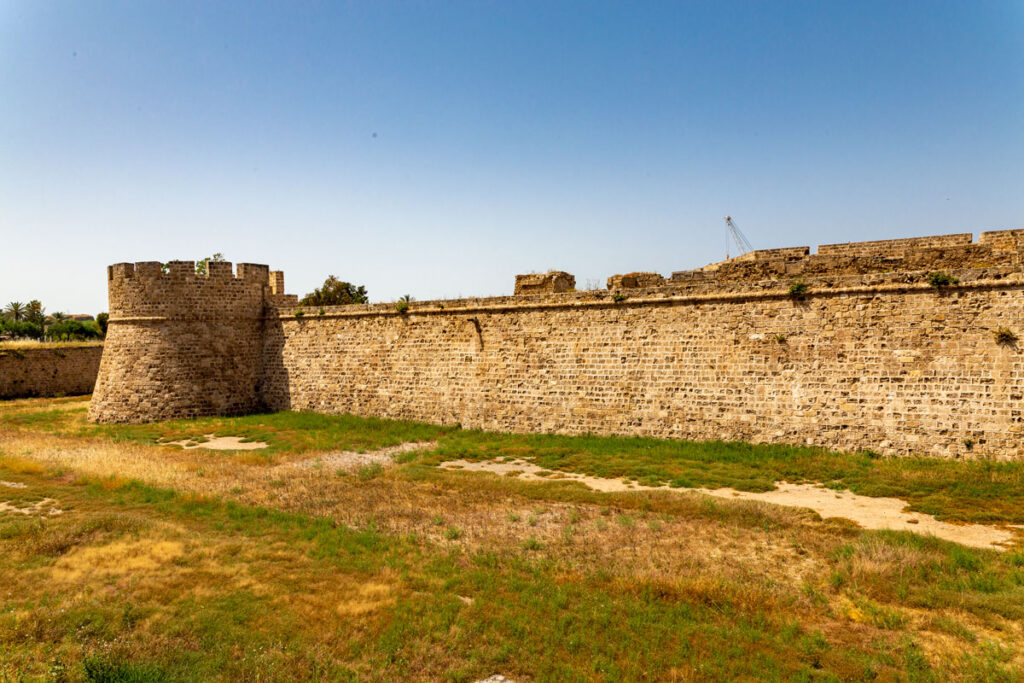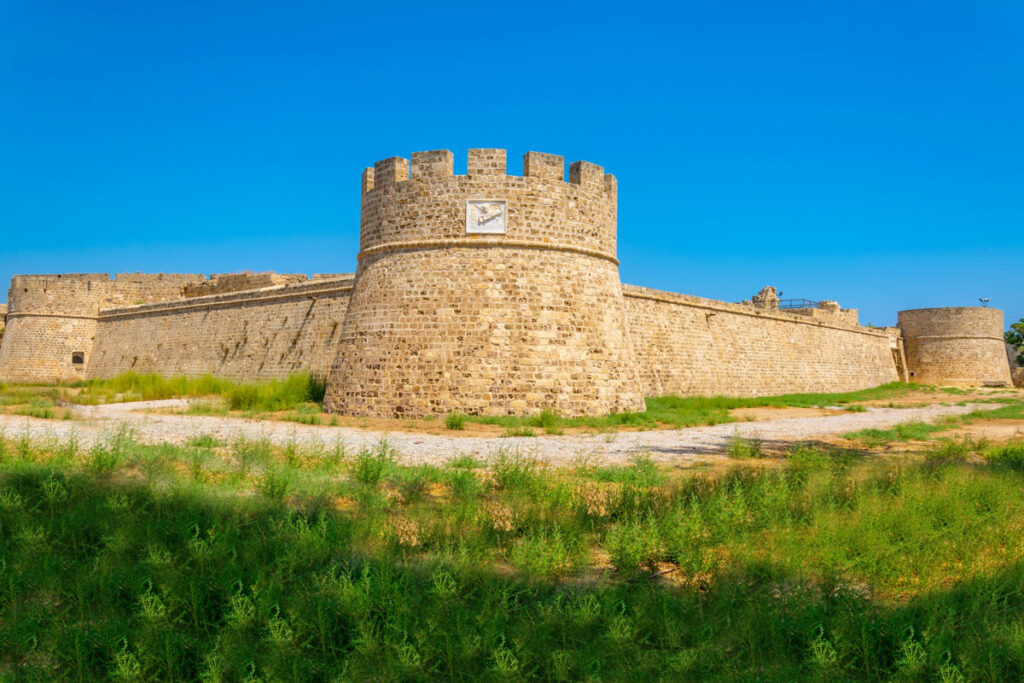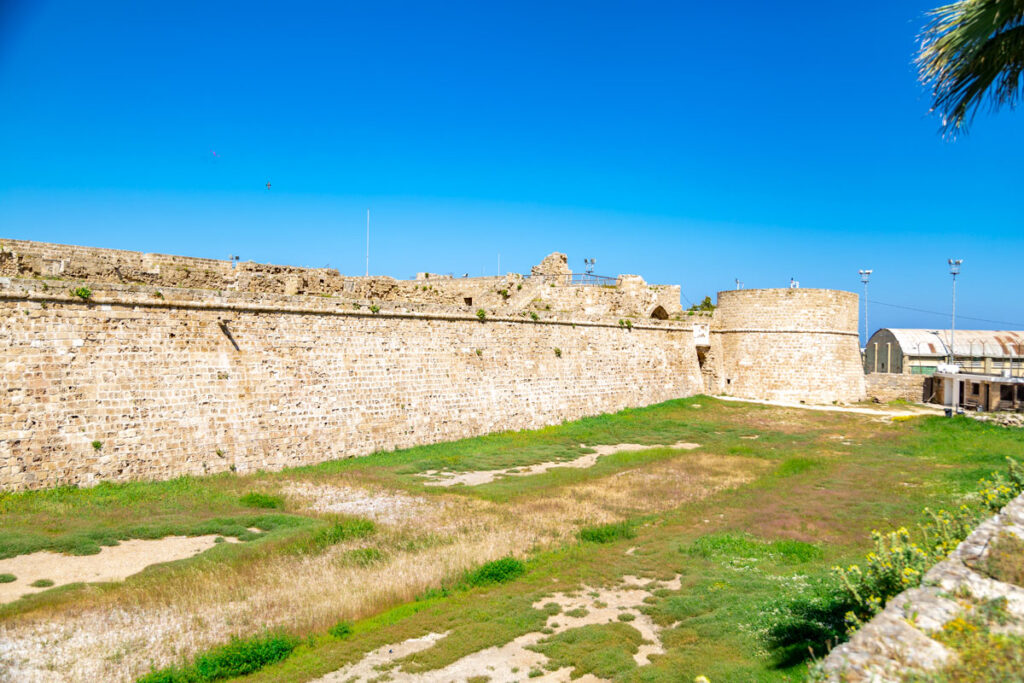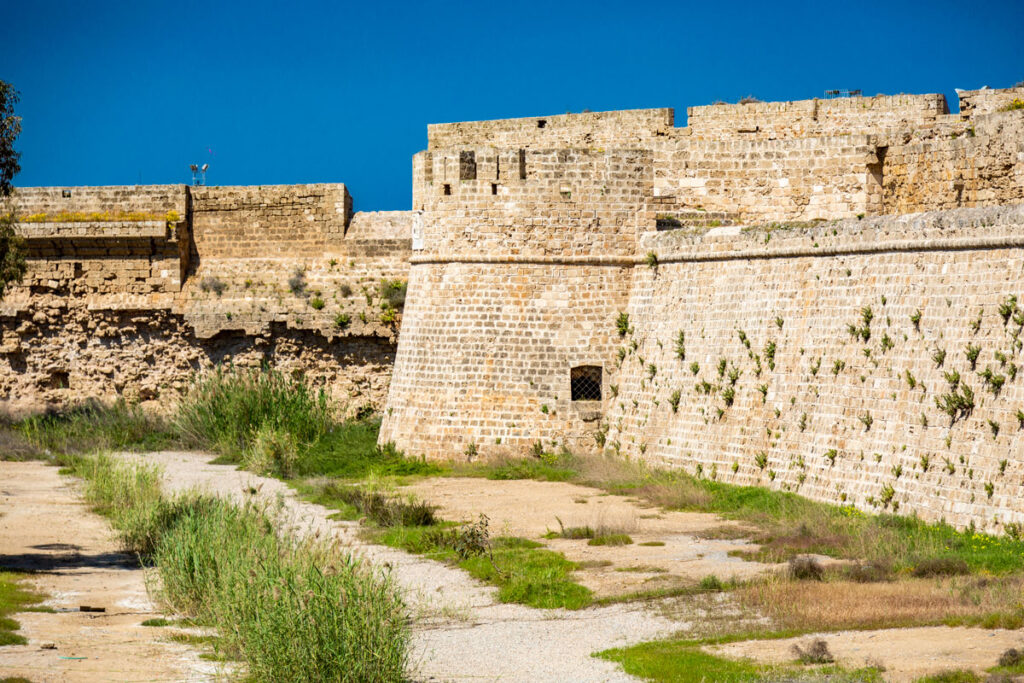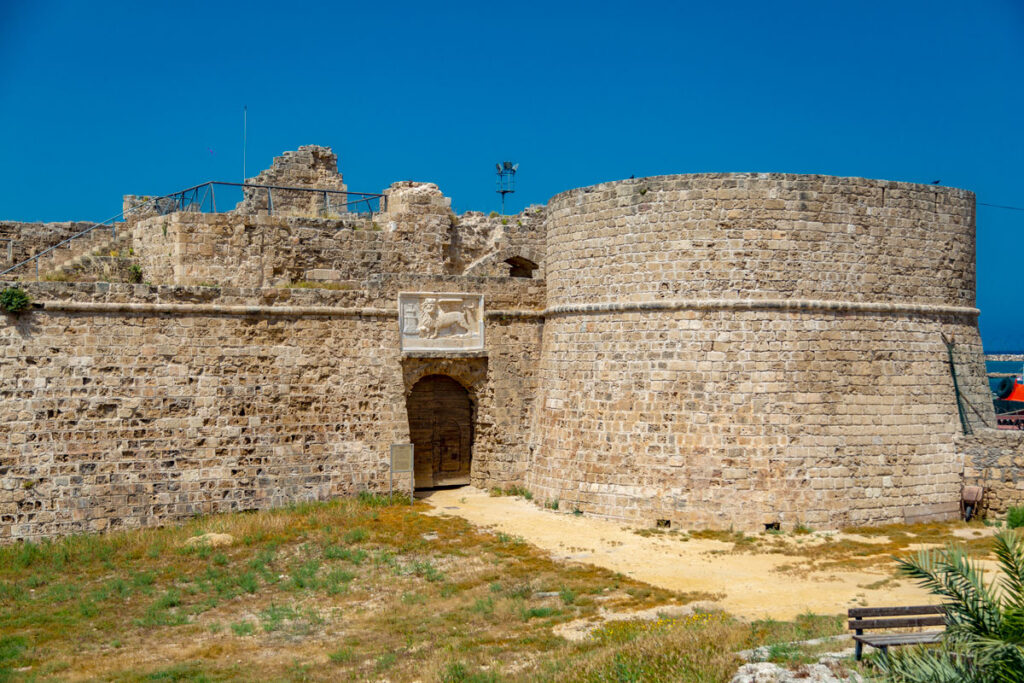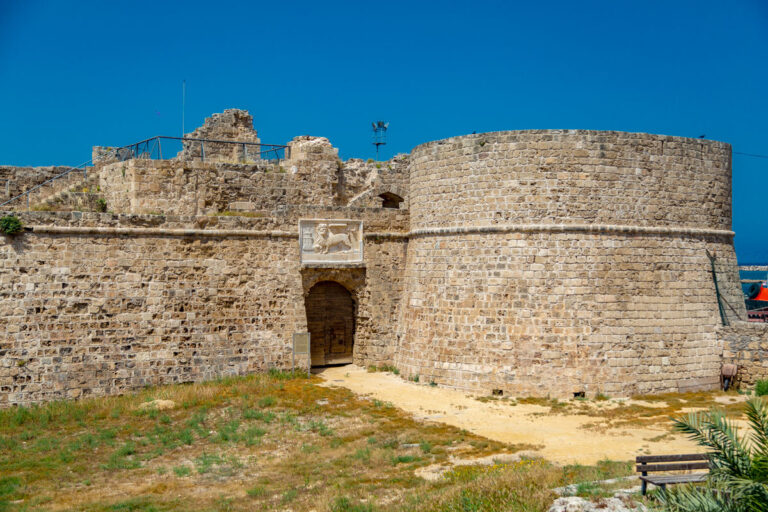Located at the entrance of Famagusta’s old harbor, Othello Castle is one of the most fascinating historical structures in Northern Cyprus. Originally constructed in the 14th century by the Lusignans, this impressive fortress served as the main gate to the walled city and as a strategic defense point for the port.
The Lusignan Era: The Castle’s Birth
Originally known as the “Tower by the Sea Gate,” the castle featured a rectangular courtyard with square towers at each corner. The lower floors were used for storerooms, kitchens, and service rooms, while the upper floors housed grand halls and royal apartments. Surrounded by a deep moat, it was considered nearly impenetrable and vital to Famagusta’s defense.
The Venetian Period: Modernizing for Gunpowder
During the Venetian rule between 1473 and 1492, the castle underwent a major transformation. The square towers were replaced by round bastions, better suited to withstand cannon fire. In 1492, a winged lion of St. Mark — the symbol of Venice — was carved above the entrance, along with the name of the Venetian commander Nicolo Foscari, who led the renovations.
Architectural Highlights
The castle still features its four round towers, central courtyard, and wide corridors. Inside, you can see displays of 16th–17th century cannons, catapult stones, and what are believed to be Spanish and Ottoman cannonballs. The Great Hall, built during the Lusignan period, stretches nearly 30 meters and is supported by impressive Gothic wooden beams. Five ribbed, vaulted rooms once served as the dining and sleeping quarters.
The Shakespeare Connection
The castle’s name is directly linked to William Shakespeare’s tragedy “Othello”, written in 1603. The play is set in a Venetian-controlled Cyprus, and Othello is said to have been inspired by the castle and its legacy during the Venetian era.
Restoration and Modern Use
By the early 1900s, the castle’s moat was filled in to reduce the risk of malaria. In 2014, major restoration works began, and the site was reopened to the public in July 2015. Today, the castle is both a tourist attraction and a cultural venue, occasionally hosting art events, concerts, and festivals.
Visitor Tips
- Panoramic Views: Climb the castle walls for scenic views of Famagusta’s harbor and skyline.
- Museum Experience: See ancient weaponry and original architectural features up close.
- Easy Access: Located in the heart of old Famagusta, within walking distance of other historic landmarks.
- Low Admission Fee: Affordable entrance with access to all main areas.
Why You Should Visit
- Historical Depth: Layers of Lusignan, Venetian, and Ottoman influence in one site.
- Cultural Significance: A rare blend of military, literary, and architectural history.
- Timeless Atmosphere: Well-preserved structure that takes you back through centuries.
Conclusion:
Othello Castle is not just a fortress; it is a story in stone, echoing the footsteps of knights, merchants, and playwrights. Whether you’re a lover of history, literature, or architecture, this magnificent structure offers a unique journey into the heart of Famagusta’s past.
Investra.io , https://www.northcyprusinvesting.com/ , https://slaff.io/en
